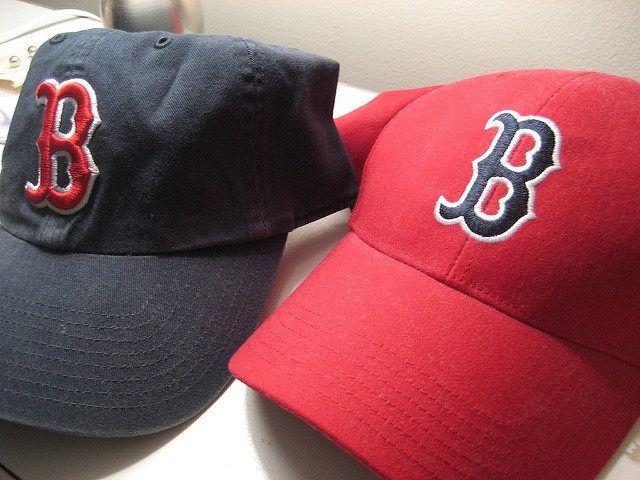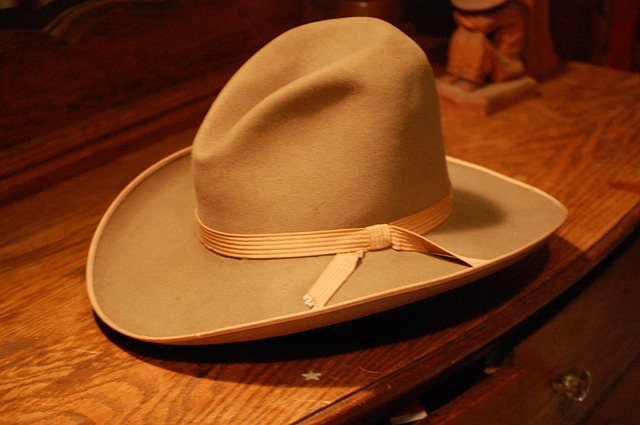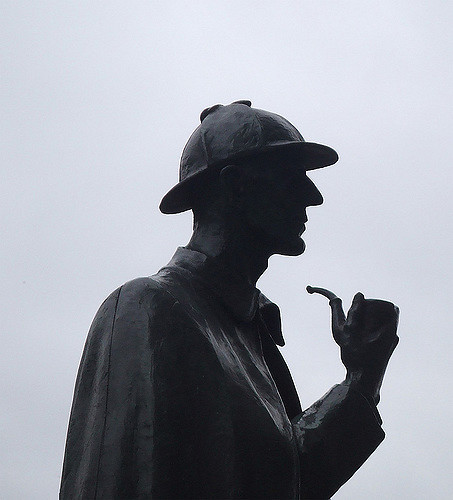Hat’s Off to English Speakers! Posted by Gary Locke on Jun 22, 2017 in Culture, English Vocabulary

English speakers wear several unique hats, all created within a few years of each other in the 19th century.
You can tell a lot about a person by the hat they wear. In many cases, a hat will tell you where someone is from, what team they root for, their hobbies, interests, and even how they live their lives. Certain hat styles inevitably lead you to form an impression of a person without ever needing to speak to them. In “The Adventure of the Blue Carbuncle” Sherlock Holmes deduced the life story of one Mr. Henry Baker simply by studying his hat. More on that later.
The Baseball Cap
In the English-speaking world, some hats have come to define the culture. Consider the baseball cap, seen above. This hat is seen everywhere around the world now, but its history is distinctly American. It is called a baseball cap for a reason. It was specifically designed for wear by baseball players around 1858 and, while the construction has altered some over the years, it remains relatively unchanged.
The original baseball cap was made of wool, and it featured the classic high crown top for comfort and an attached bill, or visor, for shading out the sun’s glare on a cloudless day on a ballfield. In 1895 the extended bill was stitched to the cap. When the Detroit Tigers added their team logo to the front in 1901, the cap as we know it was complete.
However, wearing a ballcap anywhere but on the field of play was basically unknown until the late 1970s. Some link the public’s acceptance of the cap in everyday life to the television series Magnum PI, in which actor Tom Sellick turned wearing a Detroit Tigers cap into a symbol of cool, boyish charm. The demand for that cap and caps of other major league clubs was suddenly seen as a way to express pride in your town and team. Before too long the commercial potential of putting any symbol or lettering on a ballcap became apparent. And the way you wore your cap – sideways, backward, bill tilted up or down – became a method of further personal expression. Today, the ball cap is worn by women as well as men throughout the world.
The Bowler

Before America’s baseball cap there was the bowler hat, invented in 1849 for Edward Coke, brother of the Earl of Leicester in Norfolk, England. Coke wanted a hat that his gamekeepers could wear to avoid harm from low-hanging branches as they rode through his estate. The hard crown and swooping bill were ideal for riding, and the look was soon adopted for equestrians throughout Britain.
The bowler became popular among the lower classes in the 19th century even among women, because it was affordable and offered a certain amount of protection for the head from whatever might come falling down upon you. But it is as a look for landed gentry and respectable businessmen that the bowler is perhaps best known for. It was accepted as a necessary accessory to London City gentlemen in the mid-20th century, popularized by Winston Churchill, and now symbolizes upper-class status. It was also, curiously, the most popular hat in the American West during the days of the cowboy, again because of both its practical appeal and price. It is not, however, the hat we most closely associate with the western cowboy.
The Stetson

The Stetson hat is the iconic emblem of the old west. Known popularly as “The Boss of the Plains”, due to its wide use among cattle drivers since the end of the American Civil War. Cattle drivers, or cowboys, would herd livestock on horseback along trails often across the wide plains of the western United States. Long exposure to the heat of the sun, coupled with the dust and changeable weather of the terrain, necessitated a wide brimmed, and easily adjustable hat for the cowboy to stay cool.
Wide brims on hats for men on horseback was nothing new. John B. Stetson, however, found that by dipping fur and kneading it multiple times he was crafting a lightweight material that was easily pliable. In other words, he made a hat out of felt. It was lightweight and weatherproof. His hat was distinguished by a straight-sided crown with rounded corners and a flat, wide brim. But, because felt is pliable, wearers could crease, fold, and reshape the hat when wet to customize it to their own preference. Once it dries, the Stetson will retain its new shape and styling. It is possible in some areas to identify where the owner is from by the distinctive creases and folds of his Stetson.
The Deerstalker

It is impossible to talk about distinctive hats of the English-speaking world without mentioning the deerstalker, made famous by the drawings of Sidney Paget, the Strand Magazine illustrator of Sherlock Holmes when Holmes first appeared beginning in July 1891. While Holmes’ creator, Sir Arthur Conan Doyle, never specifically stated that Holmes wore a deerstalker, Paget’s illustrations depicting the great detective wearing one left their mark. It is a widely held belief that Paget drew Holmes wearing a deerstalker merely because Paget regularly wore one. For over 125 years the public cannot imagine Sherlock Holmes without the distinguishing hat on his head.
The deerstalker, also called a “fore-and-aft cap” because the bill is the same shape and size on both sides, was common headgear for British males beginning in the middle 19th century, probably shortly before 1860. It was, as the name implies, widely used by hunters and other outdoor types primarily to keep the rain off the face. Britain, known for inclement weather year-round, certainly had a demand for such a hat.
It is typically made of cloth, such as wool, denim, or suede, cut into six or eight triangular pieces with rounded edges, then sewn together and given an interior lining. In addition to the unique bill, the cap also has earflaps on the sides, which are tied to the top by an attached ribbon or string. If you think this describes a fairly eccentric hat, you would be correct. Like the bowler, the deerstalker is not common attire today.
But, before we leave Sherlock Holmes, let’s return to 221B Baker Street, and watch Holmes, as portrayed by the great Jeremy Brett, tell us everything you need to know about a man by his bowler hat. Oh, and in case you have any doubts, Holmes is later proven to be 100% correct. The scene about the hat begins at 7:10.
https://youtu.be/wEMx9ZWcY8M
Deerstalker photo by Graham C99 on Flickr
Baseball cap photo by Kristin on Flickr

Build vocabulary, practice pronunciation, and more with Transparent Language Online. Available anytime, anywhere, on any device.



